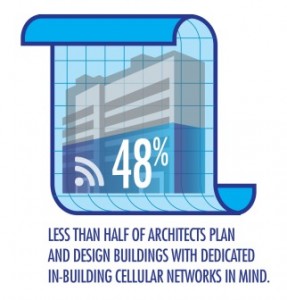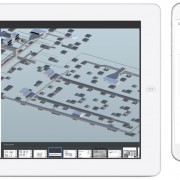Research reveals gaps in indoor wireless connectivity
Planning for mobile connectivity doesn’t match consumer demand.
In a world in which approximately 80 percent of wireless data traffic originates or terminates within a building, new global research focused on the professionals who design and manage buildings is shedding some light on this critical indoor wireless gap. For example, only about 56 percent of building managers, facilities managers, real estate managers and architects always consider mobile connectivity for a building’s tenants as a factor when working on projects.
The study, commissioned by global network infrastructure leader CommScope and carried out by Coleman Parkes, examined the current performance, attitudes and insights of building managers, facilities managers, real estate managers and architects regarding access to indoor wireless connectivity.
The findings revealed that about 48 percent of architects across the globe plan and design buildings with dedicated in-building cellular networks in mind. Providing access to cellular coverage inside buildings appears to be considerably less important to European architects than to their counterparts across the Atlantic, with 31 percent always considering it for their projects compared to nearly 65 percent in the US.
Network operators and their partners should be engaged early on.
Despite an apparent lack of commitment to planning for in-building mobile connectivity, however, 73 percent of respondents globally cited it as an “important” or “very important” factor. However, nearly 47 percent admitted to having no control over cellular coverage in their buildings, but wish they did.
“Mobile users expect uninterrupted voice service and super-fast wireless broadband wherever they are, indoors or out,” Dr. Ispran Kandasamy, global building solutions leader, CommScope said. “As bring-your-own-device policies become increasingly prevalent in the workplace, the earlier you start planning for wireless in building design, the easier it is to deliver high quality, high bandwidth networks that give consumers what they demand. The ‘build it first; fix it later’ model doesn’t work anymore with indoor wireless.”
The research also demonstrated differing opinions across industry sectors when assessing the importance of connecting people inside buildings. For example, 70 percent of respondents in retail, a sector that relies on mobile as part of a multi-channel commerce strategy, always consider indoor wireless as part of their building projects. Less consideration was given in sectors without as much reliance on mobile, such as banking and insurance (58 percent), and energy and utilities (50 percent).
All the parties involved in operating buildings should see these survey results as validating the need for taking a greater leadership role in the provisioning of in-building wireless, in the same way that seamless wired/wireless LAN connectivity is taken for granted within buildings,” Kandasamy said.











